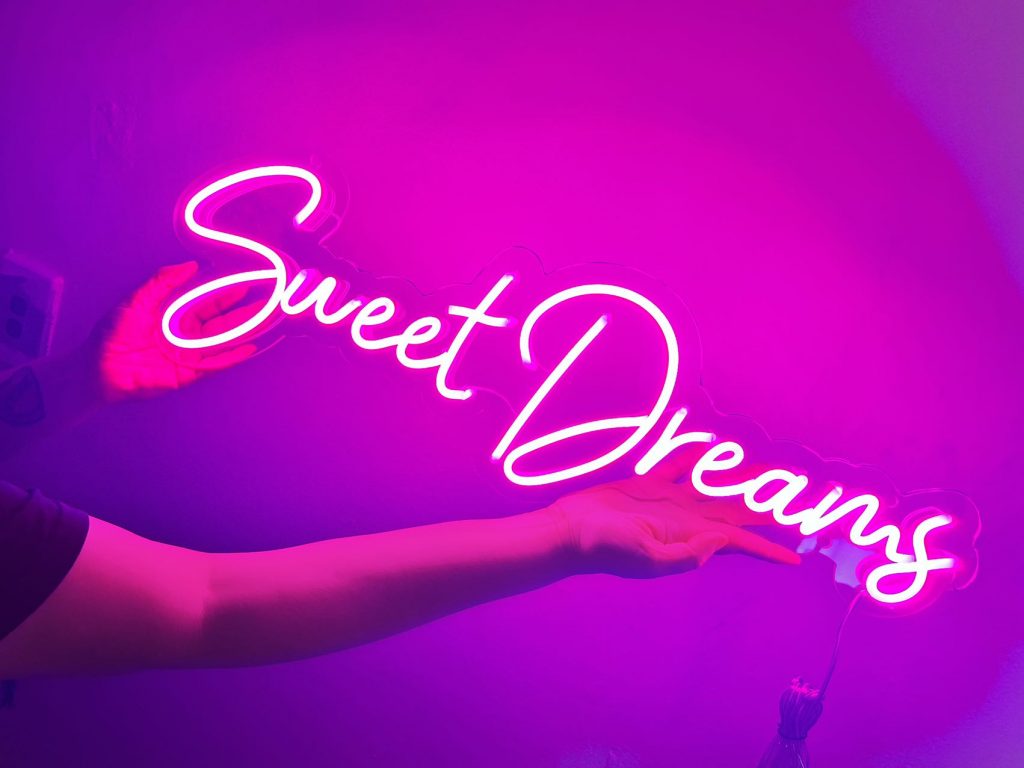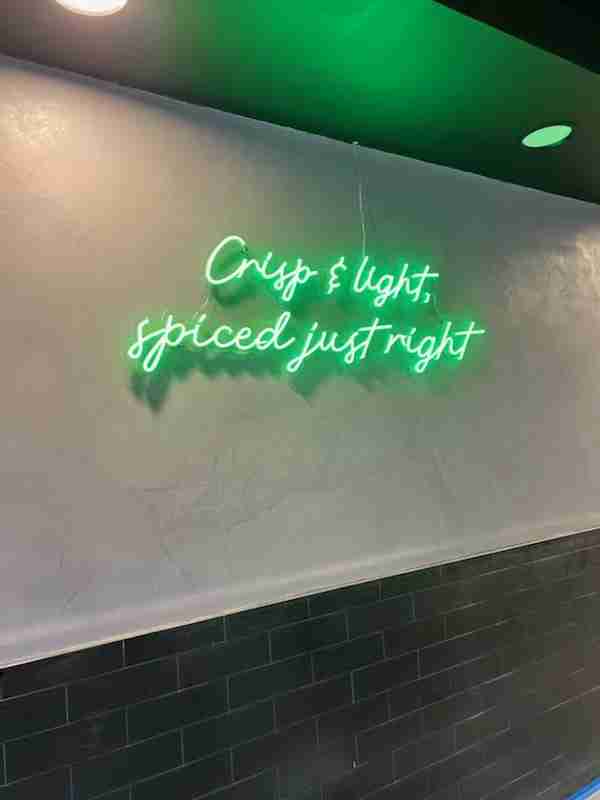In a world increasingly dominated by digital screens and mass-produced items, there’s a growing desire for individuality and personal expression. Custom neon signs have become a popular way for individuals and businesses alike to showcase their unique personalities and branding. Whether for home décor, business promotion, events, or as gifts, custom neon signs provide a vibrant and eye-catching solution. But what exactly should you know about them? In this article, we’ll explore the ins and outs of neon signs, covering everything from their history and manufacturing processes to design considerations, practical applications, and maintenance tips.
What Are Custom Neon Signs?
Custom neon signs are illuminated signs made from neon gas-filled tubes or LED lights designed to mimic the appearance of traditional neon. These signs can be tailored to various shapes, colors, sizes, and styles, making them ideal for personal expression. While traditional neon signs use real glass tubes and neon gas, modern options often incorporate LED technology for increased efficiency, versatility, and safety.
A Brief History of Neon Signs
Neon signs date back to the early 20th century. The first neon sign was created in 1910 by French engineer Georges Claude, who introduced neon gas as a source of illumination. This innovation revolutionized signage and advertising, with neon signs becoming a staple of the American landscape during the 1920s and 1930s. Their bright colors and eye-catching designs made them particularly appealing to businesses, leading to a proliferation of neon signage across various industries.
As technology progressed, so did the methods for creating and using neon signs. The rise of LED technology in the 21st century provided a more energy-efficient alternative, leading to the development of LED neon signs. These modern iterations retain the vibrant appearance of traditional neon while offering benefits such as lower energy consumption, longer lifespan, and ease of customization.
Why Choose Custom Neon Signs?

1. Personalization
One of the main advantages of custom neon signs is their ability to reflect personal style and preferences. Whether you want a sign for your home, a gift for a loved one, or a promotional tool for your business, custom neon signs can be tailored to your specifications. You can choose the colors, fonts, sizes, and designs that best represent your vision.
2. Branding
For businesses, custom neon signs can be an effective branding tool. They can help create a memorable identity, making it easier for customers to recognize your establishment. A well-designed neon sign can attract attention and drive foot traffic, especially in competitive markets. Businesses can showcase their logos, taglines, or unique offerings through custom neon designs.
3. Versatility
Custom neon signs can be used in a variety of settings. From home décor to event decorations, their versatility makes them suitable for different occasions. Whether you're planning a wedding, a birthday party, or a business launch, a custom neon sign can add a unique touch.
4. Ambient Lighting
In addition to being decorative, custom neon signs can serve as effective ambient lighting. The soft glow of neon can create a cozy atmosphere in your home or business. Neon signs can also serve as functional lighting, enhancing the aesthetic appeal of a space while providing illumination.
5. Memorable Gifts
Custom neon signs make for unique and thoughtful gifts. Whether it’s a sign with a loved one’s name, a favorite quote, or a symbol representing a shared interest, a custom neon sign can create lasting memories. Personalized gifts often hold more sentimental value, making them perfect for special occasions.
Designing Your Custom Neon Sign
1. Conceptualization
The first step in creating a custom neon sign is conceptualization. This involves brainstorming ideas and deciding on the message or design you want to convey. Consider your intended purpose: Is the sign for personal use, a business, or an event?
2. Choosing Colors
Colors play a crucial role in neon signs. Traditional neon colors include bright reds, blues, greens, yellows, and pinks. However, with LED technology, the color palette has expanded, allowing for a wider variety of options. Choose colors that resonate with your message and align with your personal or brand identity.
3. Typography and Fonts
The font you select can significantly impact the overall look of your neon sign. Consider the legibility of the text, especially from a distance. Bold, sans-serif fonts are often more readable in neon form. Custom fonts can also be designed to add a unique touch.
4. Size and Scale
The size of your custom neon sign will depend on where you plan to display it. Consider the space available and how large you want the sign to be. A larger sign may work well for a business storefront, while a smaller sign could be perfect for a cozy corner of your home.
5. Additional Elements
You may want to incorporate additional elements into your design, such as graphics, symbols, or logos. Custom shapes can enhance the sign’s visual appeal and make it more representative of your style or brand.
Manufacturing Process
1. Materials
Custom neon signs can be made using either traditional glass tubes filled with neon gas or modern LED technology.
-
Traditional Neon Signs: These are crafted by heating glass tubes and bending them into the desired shape. Neon gas is then introduced into the tube, and an electric current creates the iconic glow. This process requires skilled artisans, making traditional neon signs more expensive and fragile.
-
LED Neon Signs: These are made with flexible LED tubing that mimics the appearance of neon. LED neon signs are more durable, energy-efficient, and easier to install. They also offer greater versatility in terms of design and color options.
2. Assembly
Once the design is finalized, the manufacturing process begins. For traditional neon, glass tubes are bent into shape, filled with gas, and sealed. For LED signs, the LED tubing is cut to size and shaped according to the design. The sign is then assembled, ensuring all components are securely attached.
3. Testing
After assembly, the sign undergoes testing to ensure it operates correctly. For traditional neon, this includes checking for gas leaks and ensuring the illumination is even. LED signs are tested for brightness and color accuracy.
4. Packaging and Shipping
Once tested, the sign is carefully packaged for shipment. Proper packaging is essential, especially for traditional neon signs, to prevent damage during transit.
Installation and Placement
1. Choosing a Location
Selecting the right location for your neon signs is crucial for maximizing visibility and impact. Consider factors such as foot traffic, lighting conditions, and the overall aesthetics of the space. Signs placed in high-traffic areas or well-lit environments tend to attract more attention.
2. Installation Methods
Custom neon signs can be mounted using various methods, including:
-
Wall-Mounted: Many signs are designed for direct wall mounting using brackets or adhesive strips.
-
Hanging: For larger signs, you may opt for a hanging installation using chains or cables.
-
Tabletop: Some signs are designed to stand on tables or shelves, adding a decorative touch to furniture.
3. Safety Considerations
When installing a neon sign, safety should be a priority. Ensure the sign is securely fastened and not at risk of falling. For electrical signs, ensure proper wiring and connections to prevent hazards.
Applications of Custom Neon Signs
1. Home Decor
Custom neon signs can enhance the ambiance of your home. They work well in bedrooms, living rooms, and home offices, adding a personal touch to your décor.
2. Business Promotion
Businesses can utilize custom neon signs for storefronts, restaurants, bars, and events. They serve as effective marketing tools, drawing in customers and creating a unique brand identity.
3. Events and Celebrations
Custom neon signs are popular for events like weddings, birthday parties, and corporate gatherings. They can serve as backdrops or focal points, enhancing the celebratory atmosphere.
4. Artistic Expression
Many artists incorporate custom neon signs into their work, using them as a medium for self-expression. These signs can convey messages, evoke emotions, and create stunning visual art.
Conclusion
Custom neon signs are a vibrant way to express individuality, promote businesses, and enhance spaces. From their rich history and manufacturing processes to their design and installation considerations, there’s much to appreciate about these eye-catching creations. With endless possibilities for personalization, custom neon signs can illuminate your world, whether in your home, at an event, or as part of your branding efforts.




